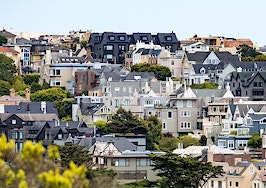The number of homes listed for sale across the nation fell sharply in the last three months of 2018, according to home search website Trulia‘s latest Inventory and Price Watch Report released on Thursday. (Trulia is owned by Zillow Group.)
Nationally, home inventory has been falling for the last two years straight. In the last three months, it fell by 4.6 percent year-over-year.
The drop was felt even most sharply in the premium home market. According to Trulia, the number of homes with a median list price of at least $460,000, dropped by 7.8 percent in the last three months. The number of starter homes, or properties with a median listing price of $139,500, fell by 2.2 percent, while their listing prices rose the most drastically.
But there is a ray of sunshine for prospective homebuyers heading into 2019: even though inventory fell nationwide, certain markets saw the opposite effect. In West Coast cities with overpriced housing markets, inventory rose in double digits — San Jose saw growth of 66.6 percent; San Francisco, 36.5 percent; and Oakland, 29.2 percent, respectively.
And in Seattle, inventory climbed 32.3 percent (which may help explain a separate Redfin report out this morning showing that bidding wars in the city have mostly disappeared, with only 1 in 10 homes experiencing a bidding war compared to 8 out of 10 in February of this year.)
“After promising signs of slowing inventory declines last quarter, the news is mixed as we close out 2018,” said Cheryl Young, Trulia’s senior economist, in a prepared statement. “While more sellers are listing homes in expensive West Coast markets, most homebuyers must still contend with tight inventory that’s down 24 percent from five years ago.”
The median starter home listing price grew by 13.9 percent from a year ago — compared to 8.9 percent for trade-up homes and 5.7 percent for premium homes — putting them increasingly out-of-reach for first-time buyers. But this is also a natural consequence of a tight inventory market (total national housing inventory was 24 percent higher five years ago, for example).

Courtesy of Trulia
In fact, home inventory gains are most likely to appear in cities where people are growing increasingly unable to afford them — in San Francisco, the average starter home now sells for $895,000 while a starter household only earns $35,425 in annual income.
Trulia’s report found that affordability only continues to worsen. While starter homebuyers could expect to spend 34.2 percent of their income on monthly mortgage payments a year ago, market prices now demand 41 percent of income’s for the same type of house.
“Coupled with slow wage growth, prices continue to inch higher, worsening affordability within the starter home market and possibly putting homeownership out of reach for many first-time buyers,” Young said.













